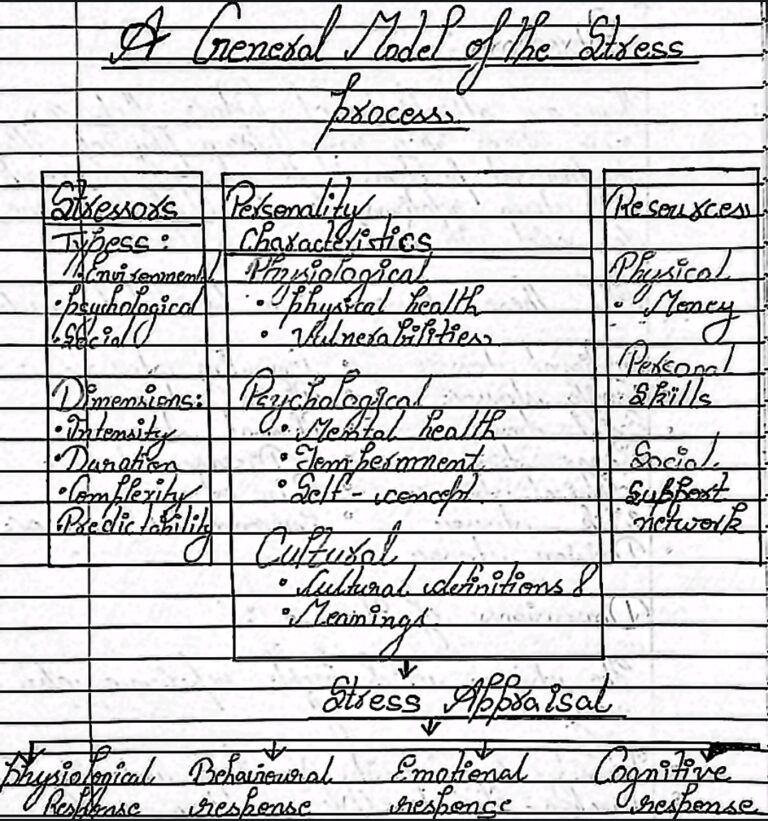Dimension of stressors
The stresses which people experience also vary in terms of:
Intensity- low intensity vs high intensity
Duration- short term vs long time
Complexity- less Complex vs more complex
predictability- unexpected vs predictable
The three major types of stress
Physical and Environmental
physical spaces are demands that change the state of our body. We feel strained when we overexert ourselves physically, lack a nutritious diet, suffer an injury or fail to get enough sleep.
Environmental stresses are aspects of our surroundings that are often unavoidable such as air pollution, crowd in common noise heat of summer and winter cold affect our another group of environmental stresses are catastrophic events for disasters such as fire earthquake, floods, etc.
Psychological
These are stresses that we generate ourselves in our minds and are unique to the person experiencing them. These are internal sources of stress.
Frustration results from the blocking of needs and motives by something or someone that hinders us from achieving a desired goal. There could be a number of cores of frustration such a social discrimination, interpersonal hurt, low grades in school, etc
Conflicts may occur between two or more incompatible needs or motives, for example whether to study, dance or psychology. There may be a conflict of values when you are pressurized to take any action that may be against the value held by you.
Internal pressures is time from belief based upon expectations from inside us to ourselves such as ‘I must do everything perfectly”. Such expectations can only lead to disappointment.
Social pressures may be brought about from people who make excessive demands on us. this can cause even greater pressure when we have to work with them to stop also, there are people with whom we face interpersonal difficulties ‘a personality clash’ of sort
Social
These are included externally and result from our interaction with other people. Social events like death or illness in the family, strained relationships, trouble with neighbours are some examples of social stresses. These social stresses vary widely from person to person. attending parties may be stressful for a person who likes to spend quiet evenings at home while an outgoing person may find staying at home in the evening stressful.




